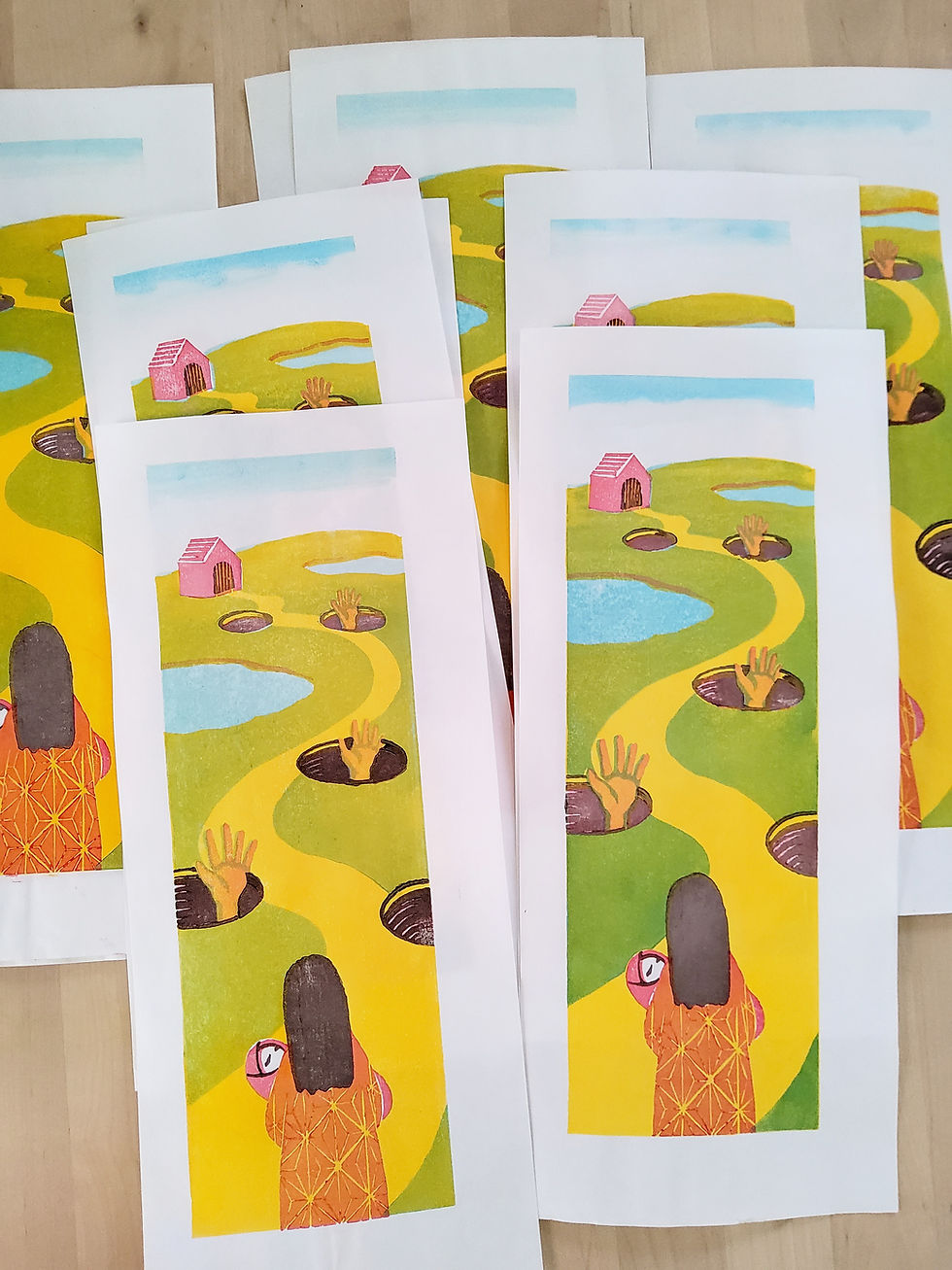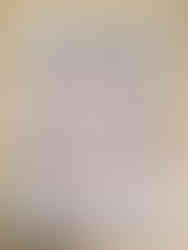Finding the Way Home
- Miki Goerdt

- Dec 30, 2022
- 4 min read
Updated: Jan 4, 2023
In December as the 3rd month of my Artist Residency in Motherhood, I explored my experience of being a working mother when my daughter was very young. Key concepts that came up for me this month: stigma against working mothers, othering within my own community, seeking guidances from a Japanese artist mentor, and artmaking as a process-oriented activity.

I used to feel distressed around 5pm on Monday through Friday. When I used to visit clients at long-term care facilities, my workday ended at 5pm. But just when I was ready to leave, a staff member or client often caught me and wanted to talk. So I’d stay a bit later. Then I’d rush to my car and hope that my daughter wouldn’t be the last child picked up from her preschool–because somehow, in my guilt-filled mind, that would make me the worst mothers on this earth. It would irrationally mean that I value my work more than my daughter.
This is what I was thinking about when I started working on the new Mokuhanga image. The hands coming out of holes represented those who wanted help from me. The route home got much longer as I stopped and helped them out. As I spent more time with this image, however, I recognized it has more meaning. It is also about how I, as a working mother, wanted to return to my cultural roots with my daughter in my arms. As I became “Americanized” during my stay in the U.S., I wondered if I knew the way home, back to my culture, in order to share it with my child.
The guilt I felt about being a working mother mainly came from interactions within my community. Some of them ended up disapproving of working mothers as not having enough time to meet their children’s emotional needs as well as to pass on the culture and language. Until I became a mother, I did not realize stay-at-home mothers were still considered better mothers than working mothers in some Japanese communities; I thought such a belief was no longer applicable to mothers in our generation. It stunned me every time my daughter’s Japanese teachers attributed my daughter’s negative behaviors and emotions to my full-time work. Those moments made me feel as if I could not be a “good Japanese mother” as long as I was working.
Wanting to be “a good Japanese mother,” I got caught up in making a mental list of what to do and what not to do with my child. Most often, what not to do stood out more in my eyes, like holes in the ground, ready to take me down into the dark.
Several years later, this month, I made the Mokuhanga image that captures the experience:

Finding the way home, Mokuhanga print, 11 x 4.5 inches
I must say, this is not how I wanted it to look. I have spent hours on this image. Is this as good as I can make it? I don’t like it. All I notice is the holes. The grass is not green enough. Did I waste my time on this?
As an art therapist, I believe that how we relate to our artworks and artmaking process is how we relate to our lives. How I relate to this image is how I relate to my experience of mothering. In retrospect, I spent much of my daughter’s early years looking at what could go wrong and planning how to avoid it. As a result, the holes become the focal points in this image — instead of the mother-and-daughter unit at the bottom. I asked myself, “How can I re-do this image?” How can I rewrite this narrative?
I thought about what I say to my clients and students: We don’t have to do it alone. A good mentor understands your visions and knows how to bring out your potential. So I wrote to Yamaguchi sensei, my printmaking mentor/teacher, for advice. I know he gets me.
The image on the left was the final product after receiving Yamaguchi sensei’s critique on my practice prints I shared.
I adjusted the width of the bokashi (gradation technique) on the top, and the shading on the back was softened with added white lines in order to make the figure stand out more.
Dear Yamaguchi sensei,
My print turned out terrible. I hate it. Brown color in this image really bothers me…In many ways, having holes as the focal point accurately represents my mothering experience several years ago. And that’s why I hate it. I wish I was able to parent differently back then. I have many regrets. I wish I proudly walked the way home to my cultural roots, with my daughter in my arms. I know I can’t go back in time, but is there a way to change the image? How can I shift this image’s focus from holes to my daughter and I?
Let’s see what he says. Art is not only about the final product but also about the process of making it. I will share what I decide to do with the image at the end of January 2023!
Thanks for reading, and I wish you a happy new year. Let's stay in touch:











Comments